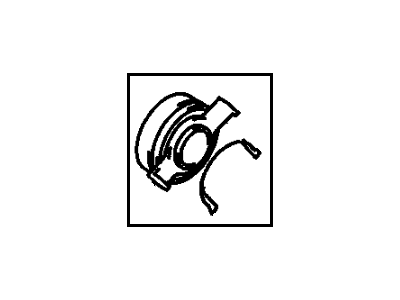My Garage
My Account
Cart
Genuine Pontiac Vibe Release Bearing
Clutch Release Throw Out Bearing- Select Vehicle by Model
- Select Vehicle by VIN
Select Vehicle by Model
orMake
Model
Year
Select Vehicle by VIN
For the most accurate results, select vehicle by your VIN (Vehicle Identification Number).
2 Release Bearings found
Pontiac Vibe Release Bearing
Each OEM Pontiac Vibe Release Bearing we offer is competitively priced and comes with the assurance of the manufacturer's warranty for the part. Furthermore, we guarantee the speedy delivery of your orders right to your doorstep. Our hassle-free return policy is also in place for your peace of mind.
Pontiac Vibe Release Bearing Parts Questions & Experts Answers
- Q: How to remove and replace a clutch release bearing and Clutch Fork on Pontiac Vibe?A: Disconnect the cable from the negative terminal of the battery. Remove the transaxle. Remove the clutch fork from the ball stud by pulling on the retention spring, then remove the bearing and the lever. Hold the bearing by the outer race and rotate the inner race while applying pressure. If the bearing doesn't turn smoothly or if it's noisy, replace the bearing/hub assembly with a new one. Wipe the bearing with a clean rag and inspect it for damage, wear, and cracks. Don't immerse the bearing in solvent-it's sealed for life and to do so would ruin it. Also, check the clutch fork for cracks and bends. Fill the inner groove of the release bearing with high-temperature grease. Also, apply a light coat of the same grease to the transaxle input shaft splines and the front bearing retainer. Lubricate the clutch fork ball socket, lever ends, and release cylinder pushrod socket with high-temperature grease. Attach the release bearing to the clutch fork. On models that use a retaining clip, make sure it engages properly with the lever. Slide the release bearing onto the transaxle input shaft front bearing retainer while passing the end of the clutch fork through the opening in the clutch housing. Push the clutch fork onto the ball stud until it's firmly seated. Apply a light coat of high-temperature grease to the face of the release bearing where it contacts the pressure plate diaphragm fingers. The remainder of the installation is the reverse of the removal procedure.
- Q: How to remove and install Clutch Disc,Pressure Plate and Release Bearing on Pontiac Vibe?A: Clutch components may be accessed by removing the transaxle, but the engine should not be removed unless it is being overhauled. In these cases, worn clutch components should be checked and replaced because their cost of replacement is much less than that of laborious access to them. Start with the release cylinder removal without hose disconnection when the engine remains in situ. After this, extract the transaxle out of the car providing assistance to the motor during removal either through an engine hoist or a jack under the engine with a piece of wood placed beneath to spread out loads. For now, keep the release bearing and release fork on the transaxle. To ease clutch disc removal, put a clutch alignment tool through its hub. Check for indexing marks on both flywheel and pressure plate; if they are missing, make scribe marks as guides for installation later on. Gradually loosen up bolts that hold together pressure plate and flywheel in a diagonal manner to relieve spring pressure and then take out bolts followed by pressure plate and clutch disc. Examine flywheel for any damage, so as to decide whether slight imperfections should be machined out at a machine shop. Evaluate thickness of clutch disc lining along with rivet condition and any signs of damage that might necessitate its replacement. Install new clutch discs alongside release bearings. Inspect machined surface of pressure plate as well as diaphragm spring fingers for any damages which can necessitate replacing entire assembly; you can remove minor glazing using emery cloth however. They do provide factory rebuilt units whenever getting another stock pressure plate is called for. Prior to installation, ensure oil-free surfaces on clean flywheels, pres-sure plates,and clutch discs handling them with clean hands all throughout. Place an alignment tool between the clutch disc and pressure plate before finger tightening bolts around it (Flynn & Rushing). Guide the alignment tool into position centralizing clutch disc between pressure plate bolts, and then tighten the bolts down in a crossover pattern to the specified torque. Take out alignment tool, apply high temperature grease onto inner groove of release bearing as well as contact areas of release lever and insert grease inside input-shaft bearing retainer from transaxle. Proceed to reinstall all of the following: clutch release bearing; transaxle; release cylinder; and every part previously taken off with all fasteners tightened to recommended torque specifications.







